Use IP Pool by Workload¶
This page describes how to configure multiple NICs for workload Pods in combination with Multus and Underlay CNI, and how to allocate and fix IPs of the Underlay network through Spiderpool. Mainly include:
- Multi-container NIC for Pods
- Workloads use IP pools
- Workloads use fixed IP pools
- Workloads use auto-created fixed IP pools
- Workloads use default IP pools
Prerequisites¶
- Install SpiderPool.
- If you use manual selection of IP pool, Create IP Subnet and IP Pool in advance. If you use automatic creation of a fixed IP pool, Create IP Pool in advance.
- If you use a default IP pool, Create IP Subnet and IP Pool in advance, and configure the network interface card with the default IP pool in the Multus CNI configuration for the container network.
- Multus CR is Created.
Steps¶
-
Log in to the platform UI, click
Container Management->Clustersin the left navigation bar, and find the corresponding cluster. Then, selectDeploymentsin the left navigation bar and clickCreate from an Image.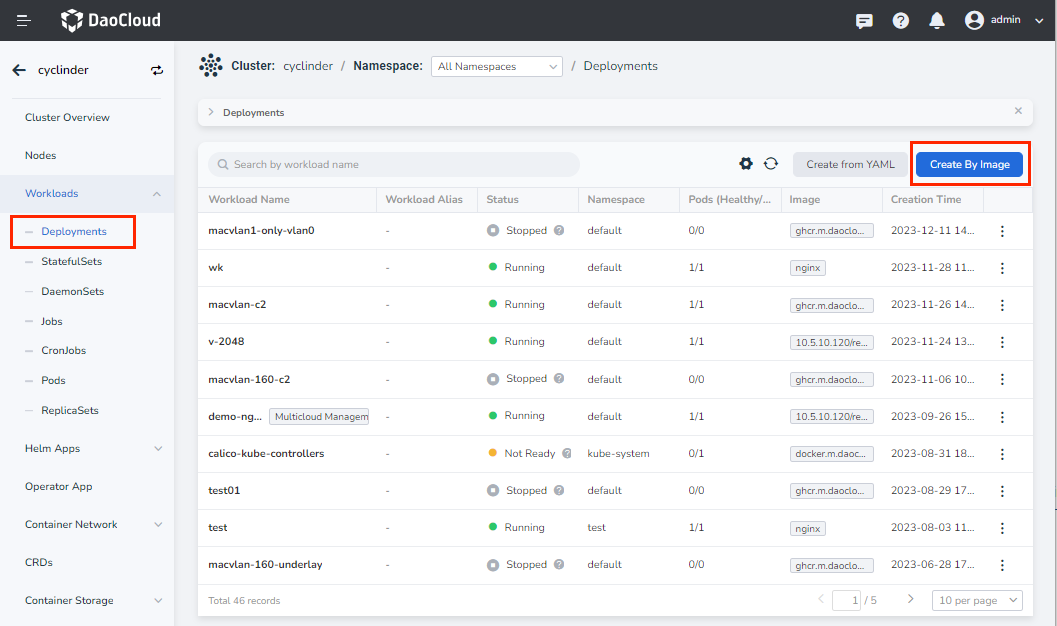
-
On the
Deploymentspage, complete the infor,ation input ofBasic Information,Container Settings, andService Settings. Then, go toAdvanced Settingsand clickContainer Network Card—>Configuration.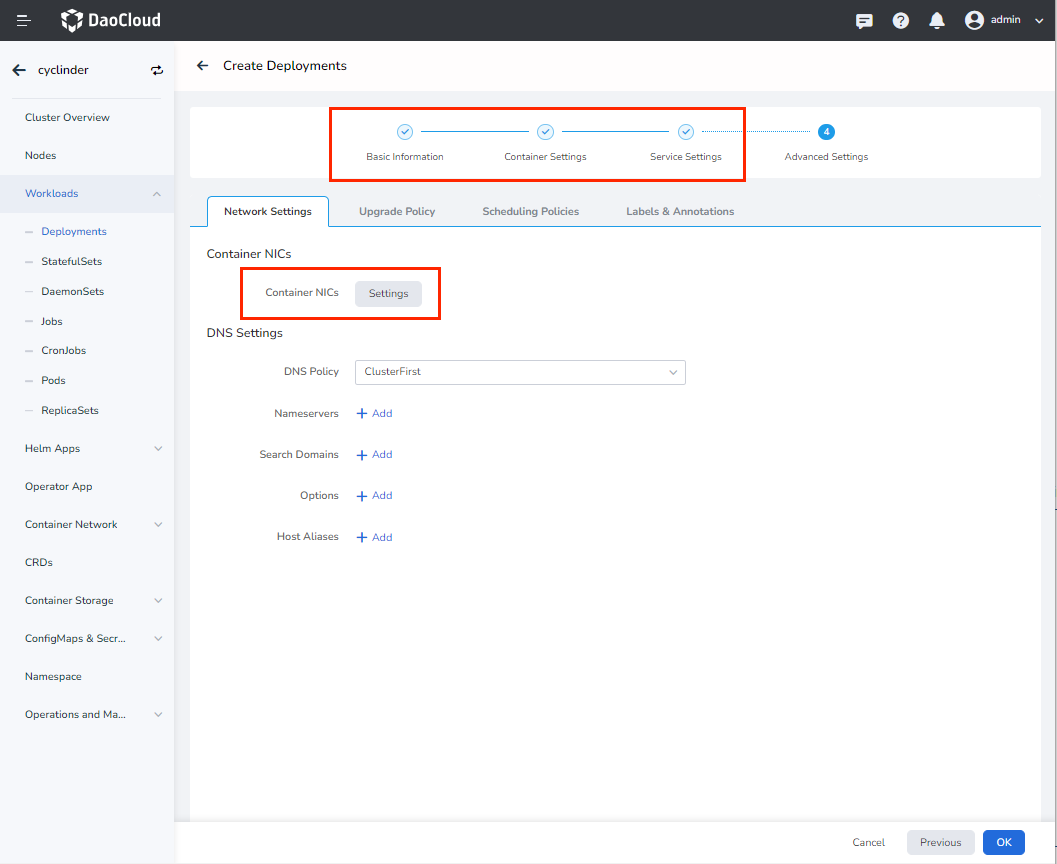
-
On
Container Network Card Configurationpage, enter following arguments:-
NIC info: If the created application container needs to use multiple NICs, such as one for east-west traffic and another for north-south traffic.-
eth0 (default NIC): Overlay CNI, Calico/Cilium is the default.
-
net1: Underlay CNI configuration is optiional, such as Macvlan/SR-IOV. The example here is Macvlan.
-
-
IPPool config: Rules for Underlay CNI IP allocation.Create fixed IPPool: When enabled, you only need to select the corresponding subnet for the new container NICs (net1, net2, net3), and the workload will automatically create a fixed IP pool when it is deployed. The container NICs can only use the addresses in this IP pool after deployment.Flexible IP: When enabled, the number of IPs in the IP pool will change according to the number of elastic IPs set. The maximum number of available IPs is equal to the number of Pod copies + the number of resilient IPs. The IP pool will be expanded when the Pod is expanded.Custom route: Custom routes can be added when applications are created with special routing needs.NIC IPPool: Select the subnet to be used by the corresponding NIC or the corresponding IP pool.
Manually select an existing IP pool
To manually select an IP pool, you need to create an IP pool in advance. You can select the range of the IP pool as
shared IP pool, add the currentapplication affinity IP pool, and add the currentnamespace affinity IP pool.
Note: If the chosen IP Pool Creation Time has added node affinity like:
zone:beijing, please add the corresponding labelzone:beijingwhen creating the workload. For use cases, please refer to: Instructions f../../config/ippool/ippoolusage.mdool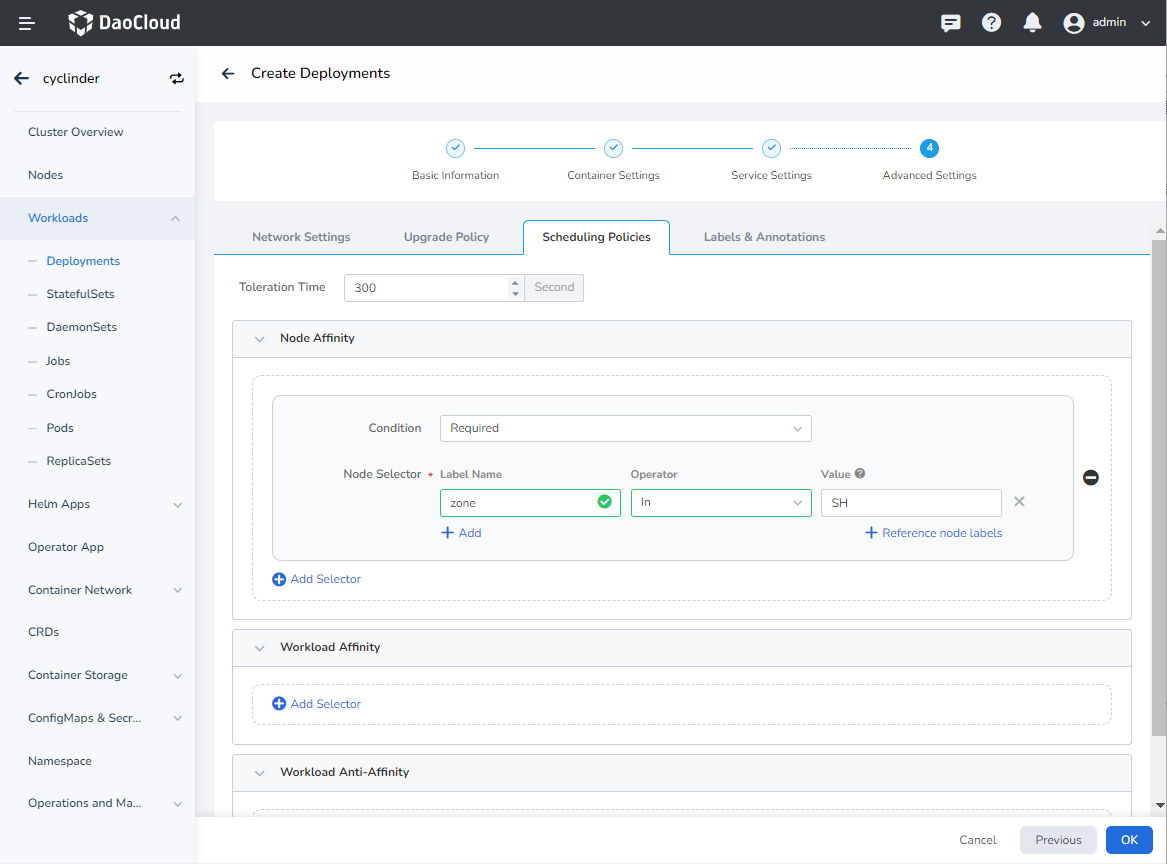
Automatically create fixed IP pool
You only need to select the corresponding subnet to automatically create a fixed IP pool
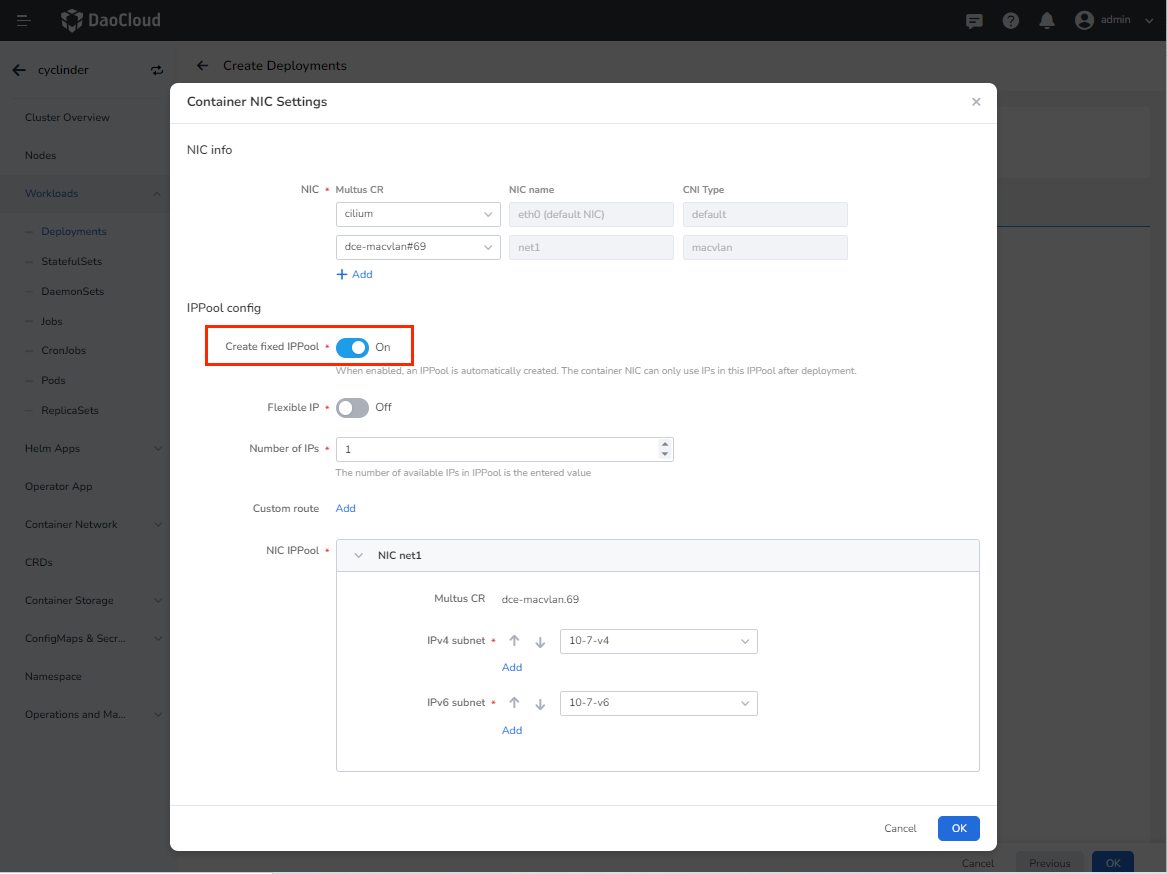
Use the default IP pool Create an IP pool in advance, and in the Multus CNI configuration, select the network card with the default IP pool to use the default IP pool function. For details, please refer to: Creating a Multus CR
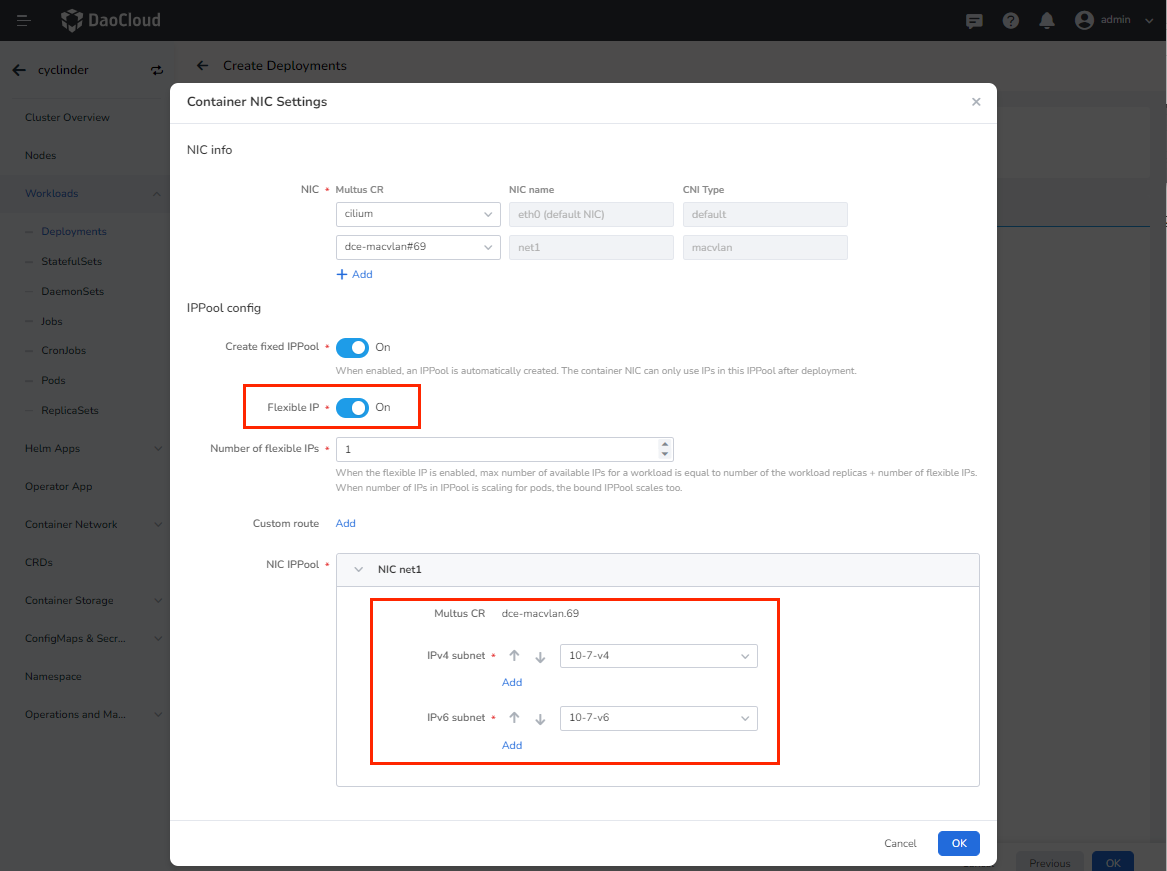
-
-
After creating the workload, you can click the corresponding workload
workload01to view the IP used by the workload Pod.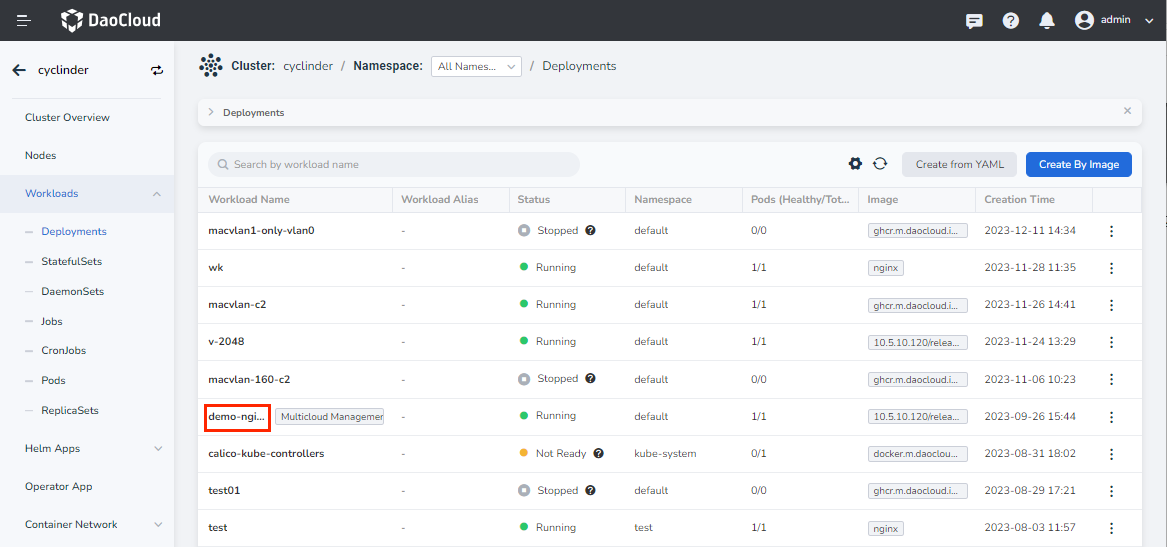
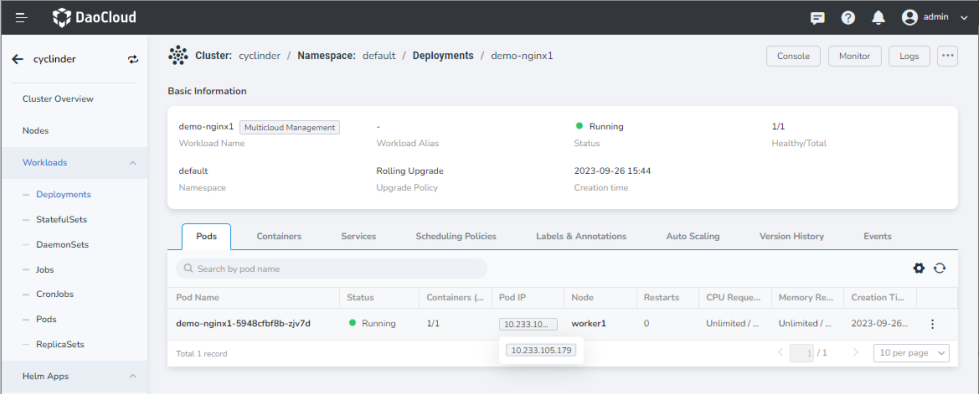
YAML usage¶
-
Use the Pod annotation
ipam.spidernet.io/ippoolto allocate IP from the IP pooltestingippoolto create the following Deployment:apiVersion: apps/v1 kind: Deployment metadata: name: workload01 spec: replicas: 3 selector: matchLabels: app: workload01 template: metadata: annotations: ipam.spidernet.io/ippool: |- { "ipv4": ["testingippool"] } labels: app: workload01 spec: containers: -name: workload01 image: busybox imagePullPolicy: IfNotPresent command: ["/bin/sh", "-c", "trap : TERM INT; sleep infinity & wait"] -
The Pods controlled by the Deployment
workload01are assigned IP addresses from the IP pooltestingippooland run successfully.kubectl get se NAME INTERFACE IPV4POOL IPV4 IPV6POOL IPV6 NODE CREATETION TIME workload01-6967dcd8df-8b6zp eth0 standard-ipv4-ippool 172.18.41.47/24 spider-worker 7s standard-ippool-deploy-6967dcd8df-cvq79 eth0 standard-ipv4-ippool 172.18.41.50/24 spider-worker 7s standard-ippool-deploy-6967dcd8df-s58x9 eth0 standard-ipv4-ippool 172.18.41.41/24 spider-worker 7s